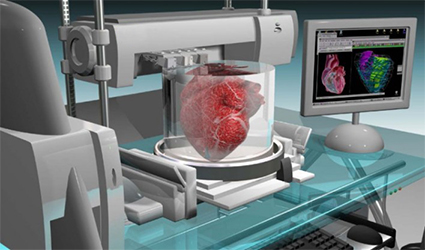Three Key Applications of 3D Printing Transforming the Medical Industry
August 10, 2018
Source: The Verdict
 2,069
2,069

3D printing is seeing constant advances in various fields, including the world of medicine. We have listed three core uses of 3D printing in the medical domain that are linked with recent advancements:
1. Bioprinting tissues and organoids
One of several varieties of 3D printing that is implemented in the medical device field is bioprinting. Bioprinters use a computer-directed pipette to coat living cells, called bio-ink, one above another to produce artificial living tissue in a laboratory.
These tissue models or organoids can be utilized in medical research as they imitate organs on a minuscule scale. They also pose as cheaper alternatives to human organ transplants.
2. 3D printing of surgical instruments
Forceps, hemostats, scalpel handles, clamps and other sterile surgical instruments can be fashioned with 3D printers.
These instruments help operate on minute areas preventing needless extra harm to the patient.
Low production cost is one of the main benefits of using 3D printing.
3. Tailor-made prosthetics using 3D printing
3D printing in the medical field can be used to design prosthetic limbs that are personalized to correspond and fit the wearer. Amputees commonly wait for weeks or months to obtain prosthetics through the conventional route; however, 3D printing appreciably accelerates the procedure. The lesser price of these products makes them principally appropriate for use with children, who rapidly outgrow their prosthetic limbs.
By DduRead more on
- Disposable Medical Products that Keep Your Medical Facility Clean and Sterile March 31, 2022
- 10 Triumphant Drug Launches Of The Decade August 26, 2021
- Ultrasonic Nebulizer Market Views September 6, 2018
- 4 Best-Selling Digital Thermometers on Drugdu.com in 2018 September 5, 2018
- Don’t Miss These Tips before Your Cardiac Monitor Purchase September 5, 2018
your submission has already been received.
OK
Subscribe
Please enter a valid Email address!
Submit
The most relevant industry news & insight will be sent to you every two weeks.



